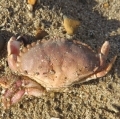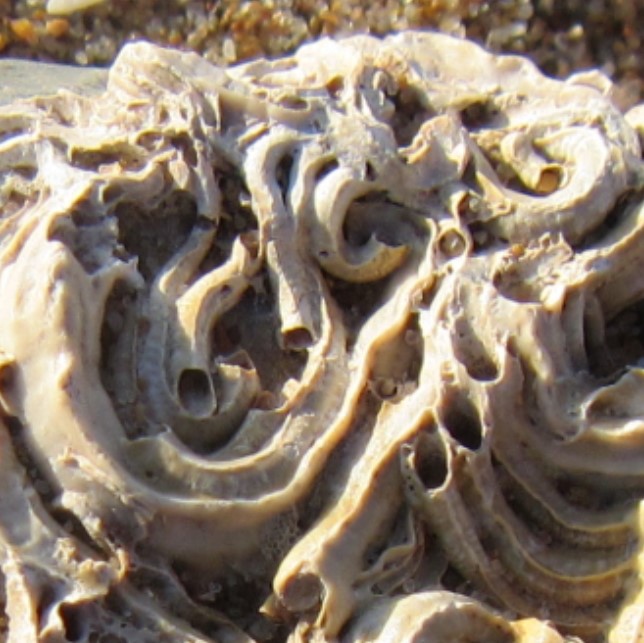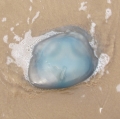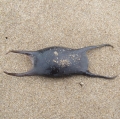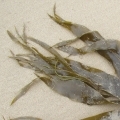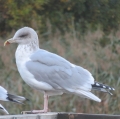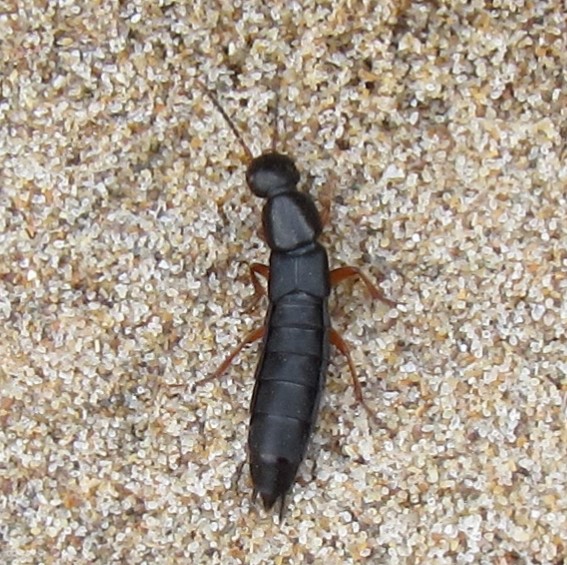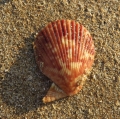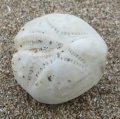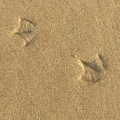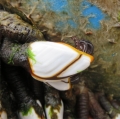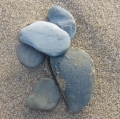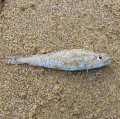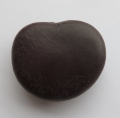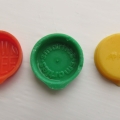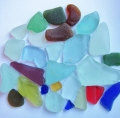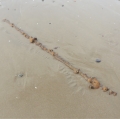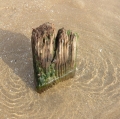Whales
in Devon
On 23rd February, a rare sighting in England was reported. A whale had been spotted in Start Bay, South Devon. Over the next couple of days, it was seen many times, sometimes remarkably close to shore.
A second whale washes up in North Devon
It was quickly agreed it was a humpback whale. At first, it looked like a mother and calf, but then it seemed there was only a single adult. There were initial fears for its health but further observation showd it to be feeding well and in fine spirits.

Alison Shearer took this photographs of the Devon whale from the shore.


Above: The distinctive head of a humpback whale
One theory for why this humpback whale is being seen so close to shore is that Storm Doris pushed an enormous number of fish - mackerel and herring - towards the shore where and the humpback whale (which both filter feeds on krill and eats fish at times) is coming into shore to feast. it is possible that a sand spit in the bay encouraged the fish to stay rather than go back out to sea.
The whale was not the only one feasting - gannets were seen diving for fish closer to the shore than I have ever seen them before, and were joined by dolphins, porpoise and seals. It was an amazing sight.

The Devon Whale is perhaps part of a bigger trend. Humpback Whales were bvery nearly hunted to extinction until a 1996 moratorium put an end to that. Numbers have snce been recovering and we are seeing more and more whales in Uk waters, especially in Scotland. Perhaps these increased sightings are a sign that humpback whales are returning to the places they once were before they were hunted.
Have a look at our galleries of beach finds above.
Never approach a whale. Not only is this stressful for the animal, it is also extremely dangerous for you. Never approach a whale in a boat. It is illegal and can land you a large fine. If you see a whale beached or in trouble, call for help immediately. If you see someone harrassing a whale, call emergency services and ask for the Coastguard.
Alison was able to take this amazing footage of the whale which really shiows quite how close to the shore it was.
Video credit:
© Alison Shearer 2017
The first sign of a whale being there was the huge spout of water and air - this is the whale exhaling and forcing its old breath out of its lungs and through the blow hole on its head. The whale can then be seenjust above the surface of the water where it takes in another breath. It then goes back underwater and it is several minutes before it needs to take another breath and is visible.
It is very difficult to estimate the length of a whale. Several sources have the Devon whale at being only 25 feet (8 metres) long. This would make it very small (they are 6 metres long at birth). The diagram on the right shows an 8 metre long humpback (in black) next to an average adult (14 metres) in grey and a human dwarfed by both.
For a few days, the whale was seen at pretty much every high tide. After the 26th February, it was not seen at all for a few days. It was spotted again on 2nd March and there have been some sporadic sightings since. Perhaps the fish supply has depleted and it has moved elsewhere to hunt.

A few days after the Slapton Whale sightings, a dead whale washed up in North Devon. On 8th March 2017, a dead whale, reported to be 10 metres long, was spotted on rocks by Hartland Quay. The whale was a fin whale whale - a type of baleen whale like the humpback. The beach had to be closed to keep people and dogs away from the body which was finally removed by truck on 21st March.
More details here.
What is a baleen whale?
A baleen whale is one which feeds krill and plankton by taking in sea water which it 'sieves' in its mouth to take in the nutrititous plant and animal life while releasing the sea water back into the sea. Its 'sieve' is made out of hundreds of plates called baleens (made out of someting similar to our finger nails). Hairs on the baleens trap the tiny bits of food. both fin whakes and humpback whales are types of baleen whale.
For details on reporting your unusual sightings, please
For help for an animal in trouble, please
